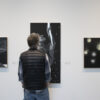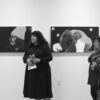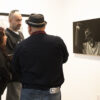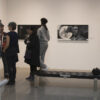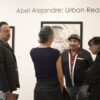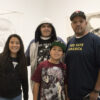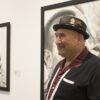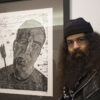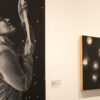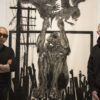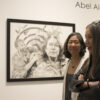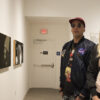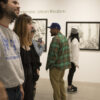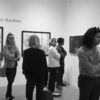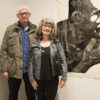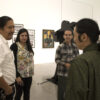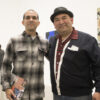Abel Alejandre: Urban Realism
Solo Exhibition in the East Gallery
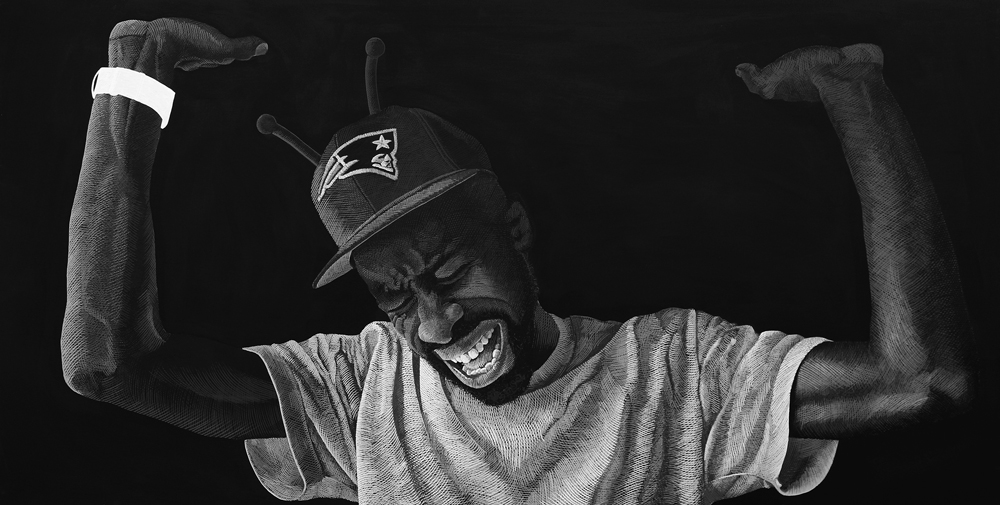
CELEBRATING THE GETTY’S PST: LA/LA
IMAGEN ANGELENO
Exhibition: November 11, 2017 – January 14, 2018
Art Talk & Walk Through: Sunday, December 3, 1PM – 2PM
Opening Reception: Saturday, November 11th, 2PM – 6PM
In celebration of the Getty Museum’s Pacific Standard Time: LA/LA initiative, which is a far-reaching and ambitious exploration of Latin American and Latino art in dialogue with Los Angeles, MOAH presents its winter exhibition, Imagen Angeleno. This exhibition will include solo exhibits of work by: Ken Gonzales-Day, Abel Alejandre, Ana Rodriguez and Linda Vallejo. The Main Gallery will feature a special exhibition, Dark Progressivism: The Built Environment, guest-curated by Rodrigo D’Ebre and Lisa Derrick. Inspired by the 2016 documentary film Dark Progressivism, written by Rodrigo D’Ebre and co-directed by Rodrigo D’Ebre and James J. Yi, this exhibition highlights the street and public art movements that characterize Los Angeles’ Southland. Dark Progressivism: The Built Environment answers the question of which movements are shaping 21st century art with a multi-faceted approach that looks to the streets of LA, where innovations in design and the idea of vandalism as a form of artistic resistance are embedded in the city’s identity.
Abel Alejandre spent the first seven years of his life in the rural region of Tierra Caliente, Mexico. In these early years, Alejandre and his family lived without electricity and running water. They emigrated to Los Angeles in 1975, which Alejandre describes as being akin to traveling a century into the future. Looking back to this transformative period, Alejandre aims to examine and reinterpret what it means to be a human being, a man and the member of a community. These themes are explored in his work as his subject matter focuses on discounted and overlooked moments that subversively yet actively shape our culture. By isolating these instances into hyperrealist vignettes Alejandre intends to stimulate the onlookers’ reflection.
The autobiographical elements of Alejandre’s work delve into the public and private spheres of masculinity and vulnerability. He frequently uses roosters to symbolize machismo, manhood, valor and patriarchy as they are animals known for their fierce instinct, beauty and determination to fight until its enemy is completely dispatched. Through his work Alejandre evaluates and questions the role of masculinity’s in contemporary society.
For over twenty years Abel Alejandre has been perfecting his practice in acrylics, woodblock prints and graphite. Alejandre’s graphite drawings makes up the largest body of work and require upwards of five months to bring to fruition, averaging eleven hours per day and consumes about 700 pencils each.
Abel Alejandre pasó los primeros siete años de su vida creciendo en la región rural de Tierra Caliente, México. En estos años, Alejandre y su familia vivían sin electricidad ni agua corriente. Alejandre describe la experiencia de emigrar a Los Ángeles en 1975 como algo parecido a viajar un siglo hacia el futuro. Mirando hacia atrás a este período transformador, él se dirige a examinar y reinterpretar lo que significa ser un ser humano, un hombre y miembro de una comunidad. Estos temas se exploran en el sujeto principal, centrándose en los momentos descontados y pasados por alto que subversivamente pero activamente dan forma a nuestra cultura. Al aislar estas instancias en viñetas hiperrealistas, Alejandre pretende estimular la reflexión de los espectadores.
Los elementos autobiográficos del trabajo de Alejandre profundizan en las esferas pública y privada de la masculinidad y la vulnerabilidad. Con frecuencia utiliza gallos para simbolizar el machismo, la masculinidad, el valor y el patriarcado, ya que son animales conocidos por su feroz instinto, belleza y determinación para luchar hasta que su enemigo sea completamente despachado. A través de su trabajo, Alejandre evalúa y cuestiona el papel de la masculinidad en la sociedad contemporánea.
Durante más de veinte años, Abel Alejandre ha perfeccionado su práctica en acrílicos, grabados en madera y grafito. Los dibujos de grafito de Alejandre constituye la mayor cantidad de trabajo y requieren más de cinco meses para llevar a buen término, con un promedio de once horas por día y consume alrededor de 700 lápices cada uno.
Artists featured in Dark Progressivism: The Built Environment include: Michael Alvarez, Sandow Birk, Chaz Bojorquez, Liz Brizzi, Roberto Chavez, Gajin Fujita, Peter Greco, Roberto Gutierrez, Jason Hernandez, Juan Carlos Munoz Hernandez, Louis Jacinto, Susan Logoreci, Manuel Lopez, Eva Malhotra, Horacio Martinez, Jim McHugh, Geraldo Monterrubio, Nunca, Estevan Oriol, Cleon Peterson, Felix Quintana, Carlos Ramirez, Erwin Recinos, Retna, Rafael Reyes, Jose ‘Prime’ Reza, Sandy Rodriguez, Shizu Saldamando, Alex Schaefer, Jaime Scholnick, Big Sleeps.
MOAH Museum of Art & History
665 W. Lancaster BLVD., Lancaster, CA 93534
Web: lancastermoah.org
Email: moah@cityoflancasterca.org
Tel: 661-723-6250



